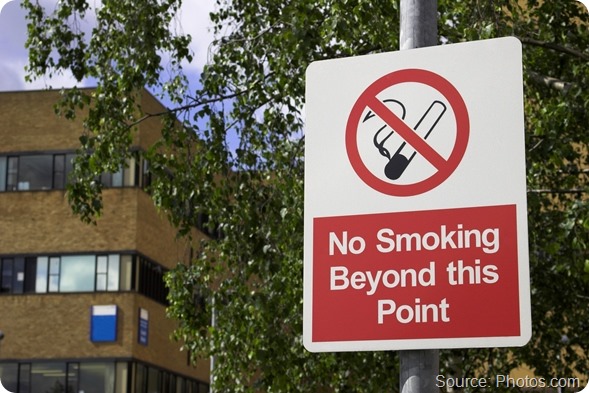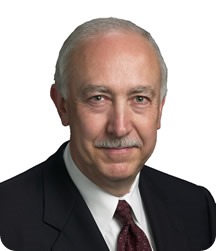
January 11th 2014 marked the 50th anniversary of the US Surgeon General’s initial report on smoking. Please can you remind us what this report stated?
The report Smoking and Health: Report of the Advisory Committee to the Surgeon General, identified tobacco as the predominant cause of lung cancer in men. This was the first widely disseminated report based on scientific studies showing the clear link between smoking tobacco and serious health conditions including cancer, chronic lung diseases and heart disease.
Dr. Luther Terry, the Surgeon General at that time, with the support of President John F. Kennedy convened an advisory group that included physicians and scientists nominated by voluntary health organizations including the American Cancer Society, American Heart Association, American Public Health Association and the National Tuberculosis Association (now the American Lung Association), federal agencies including the FDA and FTC, the American Medical Association and a tobacco industry group.
The appointees reviewed all published literature over a two year period. In addition to lung cancer the report also highlighted the links between tobacco smoking and chronic bronchitis and emphysema as well as coronary artery disease and adverse impacts on pregnancy.
One of the advisory group participants was Dr Charles LeMaistre who later served as the second President of MD Anderson Cancer Center. The report let to a dramatic shift in public awareness of the hazards of tobacco and stimulated subsequent interventions such as warning labels and a ban on television ads.

How has our understanding of the relation between smoking and cancer changed over the past 50 years?
The initial report did not emphasize what we now know as the serious addictive properties of nicotine in tobacco.
Significant research has been published added to our understanding to the relationship between tobacco use and cancer in multiple sites. Research done here at MD Anderson has demonstrated the genetic damage done by tobacco that leads to malignant transformation in the lung.
We now understand that continued exposure to tobacco through smoking or breathing air contaminated by smokers leads to thousands of genetic mutations that eventually cause lung cancer and multiple other cancers.
By how much have smoking rates decreased over the last five decades and should we consider this a success?
The proportion of the US population that uses cigarettes (about 18% overall) is about half that of the ‘60s when the report was released but over that time the population of the US has grown significantly so the number of people who are current tobacco users (still about 44 million) has dropped only about 20%.
The use of tobacco and exposure to the carcinogenic components of its combustion products is now more concentrated in individuals in lower socioeconomic levels, lower educational attainment and those with mental health conditions. Adolescents and young adults also use tobacco at significant rates.

What do you think needs to be done to encourage more people to stop smoking and to prevent people from taking it up?
A number of strategies have been documented to be effective. These include policy initiatives such as smoke-free workplace ordinances, taxes that raise the purchase price for tobacco products and limitations on sales to minors. (The vast majority of smokers initiate before 18 years of age and it is very unusual to initiate after 25 years.)
Further limits on promotion of tobacco products through sponsorships of events or displays of smoking in movies, restrictions on product placement in stores, addition of graphic warning and generic packaging can all play a role in reducing demand.
Education of the public and health professionals on ways to avoid initiation and implement cessation is important. Comprehensive multimedia public education campaigns have been effective in several states. The recent CDC public campaign was successful.
The availability of telephone cessation counselling is known to improve rates of quitting. Engaging health professionals to regularly ask about tobacco use and offer assistance in cessation (the 5 A approach) also has proven benefit.
Designing more specific cessation service programs to reach high risk populations such as those mentioned earlier is needed. Attention to the risks of tobacco exposure to adolescents and young adults can help us avoid contaminating the lungs of another generation with the toxic materials in tobacco smoke.
MD Anderson is currently launching three community programs aimed at low income youth and adolescents, individuals with HIV/AIDS and Federally Qualified Health Center clients for tobacco control efforts. Additionally we are planning a tobacco control summit for late June of next year.
Please can you outline the tobacco research programs that are currently ongoing at MD Anderson?
Tobacco related research is targeting questions about cancer susceptibility related to tobacco exposure, determining the neurobiological basis of nicotine addiction, defining the role of genetics and environment in tobacco use and cessation, and interventions with behaviour change or pharmacologic measures to improve cessation rates. These involve researchers in the behavioural sciences, epidemiology and clinical cancer prevention. A listing of recent tobacco related research in the Division of Cancer Prevention and Population Sciences and the Duncan Family Institute for Cancer Prevention and Risk Assessment are listed on the following pages:
What are your further research plans?
In addition to the areas above, MD Anderson Cancer Center Moonshot initiatives focus on lung cancer prevention with personalized cessation approaches, use of social media and mobile devices and automatic referral to treatment, early detection with CT lung cancer screening and biomarkers and treatment of advanced disease utilizing molecular profiling, developing or repurposing chemotherapy drugs.
http://www.cancermoonshots.org/moon-shots/lung/
What do you think the future holds for smoking cessation?
Developing a better understanding of the biology of tobacco addiction can help us develop better drugs to improve cessation rates. Continued study of theory based behavioural interventions and the application of clinical approaches such as motivational interviewing can help improve effectiveness of cessation efforts.
Where can readers find more information?
About Dr. Lewis Foxhall
 Lewis E. Foxhall, M.D. is MD Anderson’s vice president for health policy and professor in the Department of Clinical Cancer Prevention. His work focuses on community-based cancer prevention and early detection, access and quality of care for low-income populations. He received his medical degree from Baylor College of Medicine and his clinical background is in family medicine.
Lewis E. Foxhall, M.D. is MD Anderson’s vice president for health policy and professor in the Department of Clinical Cancer Prevention. His work focuses on community-based cancer prevention and early detection, access and quality of care for low-income populations. He received his medical degree from Baylor College of Medicine and his clinical background is in family medicine.
Dr. Foxhall is responsible for coordination of MD Anderson’s charity care program as well as administrative coordination of the MD Anderson/Harris County Hospital District oncology program. He is board member and founding chair of the Harris County Healthcare Alliance, an umbrella organization for safety-net medical provider organizations in Houston and Harris County.
He currently co-leads the Institution’s comprehensive cancer control program and is a member of the Cancer Prevention and Control Moonshot Platform leadership team. He directs the institution’s cancer survivorship efforts in policy outreach and education. He led efforts to secure and coordinates community cancer prevention and control programs through the Texas Medicaid Waiver. He supported an effort to update the Texas Cancer Plan and served as chair of the Texas Comprehensive Cancer Control Coalition. He is director of the Texas Cancer Information website project and chaired the Texas Medical Association’s Physician Oncology Education Program. He is serving his second term on the Texas Department of State Health Services Advisory Council.
Dr. Foxhall supports policy development and outreach programs in collaboration with government agencies, voluntary health organizations and organized medical groups. He serves as liaison to community physicians and is medical director of the Office of Physician Relations. He is past-president of the Harris County Medical Society, member of the Board of Trustees of the Texas Medical Association, an officer of the Texas Medical Center Library, JP McGovern Museum of Medical Science and the American Cancer Society High Plains Division.